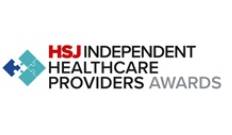The Francis report has quite rightly prompted reflections on the effectiveness of the safety culture in the NHS but how helpful is Jeremy Hunt’s recent comparison of the NHS and an airline?
‘In media coverage over the last few weeks, one detects an understandable yearning for risk-free healthcare’
When you get on a plane the outcome of your flight should be to arrive on time at your destination. Healthcare is a much more complex business: sometimes people will die because even the best care in the world cannot treat their conditions. People using the NHS are often elderly or vulnerable patients, many of whom are suffering with long-term conditions and co-morbidities, and some of whom require compassionate end of life care.
At the same time, leading-edge, innovative, treatments may offer managed risks alongside the possibility of a better outcome where the trade-offs involved are acceptable to both patients and clinicians.
Don Berwick’s “zero harm” message will be a useful mantra for staff, and his work provides a good opportunity to channel the momentum following the Francis report into positive change. Many of the Foundation Trust Network’s members have developed their own “zero tolerance” approaches towards infection control and other areas of avoidable harm, with demonstrable improvements.
Simplistic descriptions
However we also need space in the debate to define what we mean by avoidable harm, and to distinguish between zero tolerance of avoidable errors and zero tolerance of harm − because not all harm is avoidable in healthcare, nor is it solely attributable to error.
Airline failures are usually “black and white” − in the vast majority of cases, a death is a clear indication of avoidable failure due to human error, equipment malfunction or an “act of God” outside of all control.
‘NHS trusts must always do all they can to provide effective treatment, relieve pain and be vigilant against avoidable harms’
In healthcare, death can be due to a range of different variables and it is not always easy to distinguish between what may have been avoidable or unavoidable, as the endless debates over hospital mortality rate indicators and, more pointedly, the number of avoidable deaths at Mid Staffordshire, have proved.
There is something profound and important here − reading the media coverage over the last few weeks, one detects an understandable yearning for risk-free healthcare and the avoidance of death. But this seems, on occasion, to have translated into a description of hospitals as “killing grounds” where callous staff neglect patients and incompetent doctors mistreat them, resulting in thousands of unnecessary deaths, and this is then covered up by falsifying mortality statistics.
These are descriptions that those working in the NHS simply don’t recognise and they are profoundly simplistic, as well as deeply derogatory to committed staff doing a highly professional job in difficult circumstances.
Safety culture
NHS trusts must always do all they can to provide effective treatment, relieve pain and be vigilant against the avoidable harms which can occur, such as by improving infection control, preventing falls and protecting patients from new injuries.
‘It is time for a much more sophisticated debate about the levels of risk that we as a society are ready to tolerate’
Some trusts do need to do more to instil a pervasive safety culture throughout their organisations and to improve their approaches to clinical audit and other tools underpinning patient safety. However, in setting our ambitions for the safety culture in the NHS, it is crucial that we remember the complexity of factors contributing to harm and mortality in healthcare.
In clarifying guidance on use of the NHS safety thermometer last year, Sir Bruce Keogh and Jane Cummings made this point explicitly by advising organisations to analyse their case mix because it has a direct impact on harm rates. They pointed out that harm rates will be higher among a higher proportion of elderly patients who are more “biologically susceptible to harm”. They state clearly that “not all harm is avoidable” and that further local investigation will be needed to attribute the cause of any harm, to analyse whether that harm was avoidable and to learn from it.
Of course, NHS trusts have much to learn from other safety critical industries, be they air travel, construction or nuclear power. Safety critical industries all need to identify and manage risk, take an informed decision about risk appetite, and create a culture in which everyone understands and acts to mitigate unnecessary risk and avoid error at all times. However, the secretary of state’s equation of a hospital death with a death in an airline crash stretches the analogy beyond breaking point for me.
We need a culture in which staff feel empowered to act to mitigate risk, eliminate error and prevent avoidable harm without fear of recrimination and blame. It is time for a much more sophisticated debate about the levels of risk that we as a society are ready to tolerate in relation to healthcare – a debate that moves beyond simple comparisons between healthcare and airlines.



























No comments yet